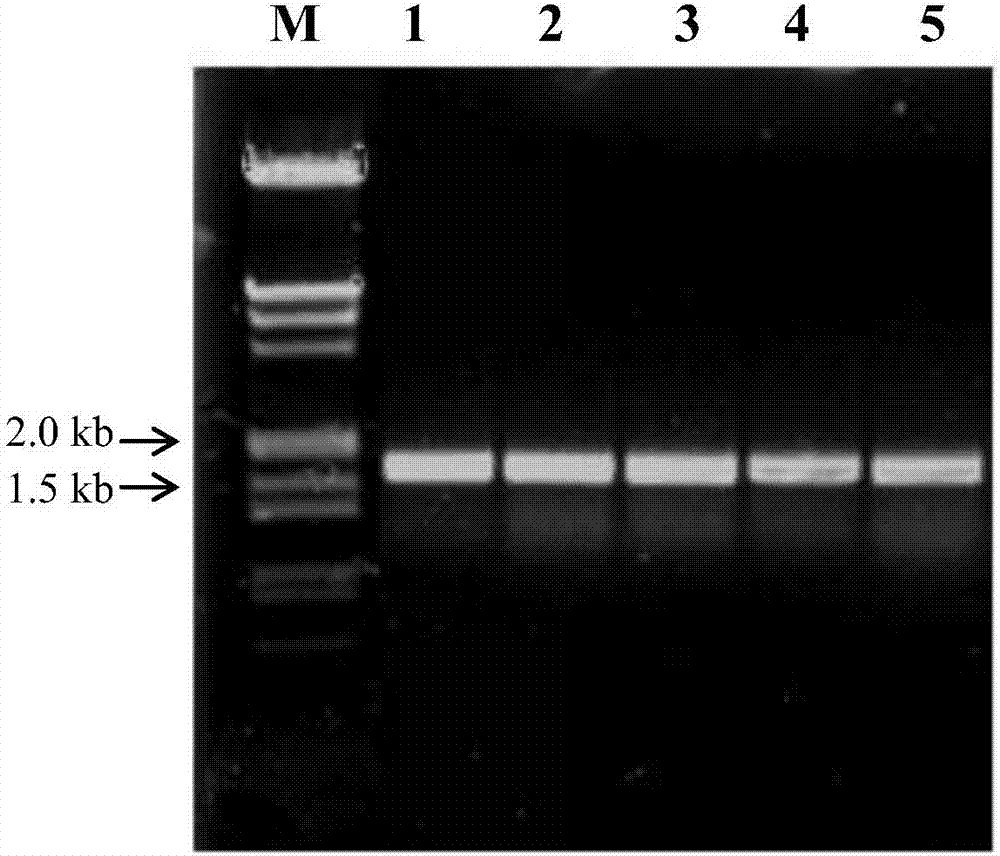Promoter HLP4 induced by low temperature, high salinity, drought or ABA
A technology of HLP4 and promoters, which is applied in the field of plant bioengineering breeding and molecular biology, can solve the problems of cloning and application of unseen promoters, and achieve the effect of good development prospects and important application value
- Summary
- Abstract
- Description
- Claims
- Application Information
AI Technical Summary
Problems solved by technology
Method used
Image
Examples
Embodiment 1
[0026] Example 1 Obtaining of the Arabidopsis HLP4 promoter
[0027] In order to obtain stress-inducible promoters, the inventors cloned the promoters of more than 100 genes from the Arabidopsis genome, and conducted large-scale screening for the activities of these promoters one by one. The HLP4 promoter was found to have strong stress-induced activity. The specific cloning process is described below.
[0028] 1) First, according to the Arabidopsis TAIR database, the regulatory sequence about 1.6 kb upstream of the translation initiation codon ATG of the HLP4 gene was selected as the HLP4 promoter sequence.
[0029] 2) According to the above sequence, use PRIMER5.0 software to design PCR amplification primers as follows.
[0030] HLP4-F: 5' AAGCTT GTTACACAACGTCATCAGATGAGTC 3';
[0031] HLP4-R:5' GGATCC GTCTAAAATCTATATGATGCCGCGG 3'.
[0032] A HindIII restriction site was added to the 5' end of the upstream primer, and a BamHI restriction site was added to the 5' end o...
Embodiment 2
[0037] The plant expression vector construction of embodiment 2 Arabidopsis HLP4 promoter and Agrobacterium transformation
[0038] The purpose is to obtain the vector expressing the glucuronidase reporter gene (GUS) driven by the HLP4 promoter, and to obtain the Agrobacterium containing the vector at the same time, so as to prepare for the subsequent transformation of Arabidopsis thaliana.
[0039] 1) The HLP4 promoter was cut out from the pMD-T18 intermediate vector with two restriction enzymes, HindIII and BamHI, and the pBI121 plant expression vector was also cut with the same two enzymes (the endonuclease was purchased from Takara Company, specifically For the conditions and procedures of enzyme digestion, please refer to its instructions). The digested product was recovered by agarose gel electrophoresis using a gel recovery kit from Tiangen Company (refer to the instruction manual).
[0040] 2) Ligate the obtained promoter fragment after digestion with the vector (use ...
Embodiment 3
[0043] Example 3 HLP4 promoter transforms Arabidopsis to verify that it is strongly induced by low temperature, high salinity, drought and ABA
[0044] The purpose is to transfer the HLP4 promoter-GUS expression vector into Arabidopsis thaliana to obtain transgenic plants for verifying whether the HLP4 promoter can be induced by adverse environmental conditions.
[0045] 1) Infect flower buds of Arabidopsis thaliana with Agrobacterium GV3101 containing a plant expression vector using the flower-dipping method (an open general method). After the siliques that grow out are mature, collect the T1 generation seeds and screen on the selection medium (MS medium with 30mg / L kanamycin added), and transplant the green transformed seedlings that can grow normally into the nutrient soil Cultivate, harvest the T2 generation seeds respectively, and then carry out the next round of kanamycin screening, and select the green seedlings:white seedlings in a 3:1 petri dish. The green seedlings ...
PUM
 Login to View More
Login to View More Abstract
Description
Claims
Application Information
 Login to View More
Login to View More - R&D
- Intellectual Property
- Life Sciences
- Materials
- Tech Scout
- Unparalleled Data Quality
- Higher Quality Content
- 60% Fewer Hallucinations
Browse by: Latest US Patents, China's latest patents, Technical Efficacy Thesaurus, Application Domain, Technology Topic, Popular Technical Reports.
© 2025 PatSnap. All rights reserved.Legal|Privacy policy|Modern Slavery Act Transparency Statement|Sitemap|About US| Contact US: help@patsnap.com



